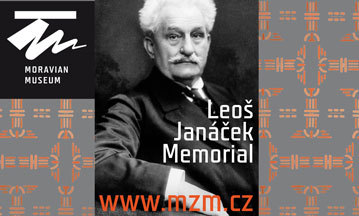Ivo Kahánek – piano compositions by Leoš Janáček and Béla Bartók
L. Janáček – In the Mists, Sonata 1.X. 1905, On the Overgrown Path (2nd series)
B. Bartók - 15 Hungarian Peasant Songs
Ivo Kahánek: piano
Janáček composed the four-movement piano cycle In the Mists at roughly the same time as The Fiddler’s Child.
He entered the work into the Friends of the Arts Club competition for piano and songs. Although the “Mists” was chosen as the winner by the Club in 1912, the composer withdrew it in favour of songs by Jaroslav Kvapil.
Unlike his previous piano pieces, the composer did not give names to the four movements. He leaves it up to the performers whether to read into the keys, using a large number of key signatures and movement on the black keys, a certain resignation, like some vague hope for the recognition he coveted for his previous works. The cycle In the Mists was premiered at the start of 1914 as part of a symphonic concert at the Organ School.
1.X. 1905 – the piano sonata (originally entitled From the Streets on 1 October 1905) was preserved thanks to its first performer, Ludmila Tučková. But neither her copy nor her interpretation retains the sonata’s original three-movement form. Prior to the premiere in 1906, the composer destroyed the first movement, leaving only Presentiment and Death (originally Elegy). Later, in a fit of self-criticism, the composer “threw into the Vltava” the manuscript of both movements. However, the composer examined and approved the copy of his sonata. The work was a reaction to the tragic events of “Volkstag”, when a young carpenter’s apprentice, František Pavlík, was killed during a clash between demonstrators and soldiers in Brno.
The second series in the piano cycle On the Overgrown Path is a collection of four compositions. They were written around 1911, when the composer was preoccupied with the idea of continuing the first series. He composed only three pieces, and the first of them was published as a supplement to the Lidové noviny newspaper. The next publication in this “series” was not until after the composer’s death, and it contains the second and third pieces along with another two which the composer had left out from the first series.
The form of the second series eventually became fixed at four pieces. They have no other titles apart from their tempo markings. However, all indications are that even these individual numbers are linked with Janáček’s memories and impressions of Hukvaldy and the musical inspiration which his native region imprinted on his memory.
Under the influence of a collection of Romanian and Slovak songs, Béla Bartók composed the 15 Hungarian Peasant Songs for solo piano during the war years of 1914 to 1917. He himself was an excellent pianist and also performed the premiere of this work. The fact that the songs and their melodies and modalities remained in his mind for a long time is shown by his later arrangements of some of them for orchestra (1933). In each of the fifteen pieces we can hear the inspiration of the harmonies and instrumentation of folk music.





